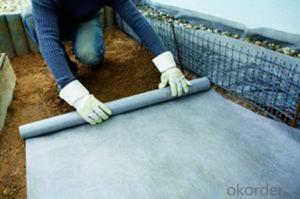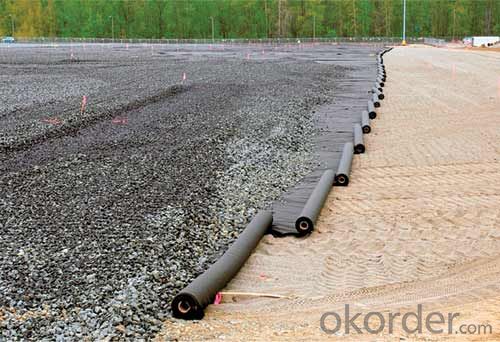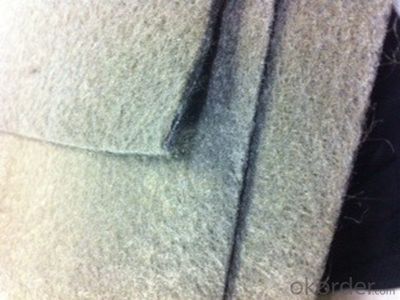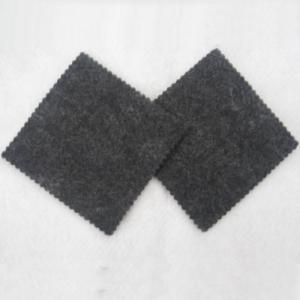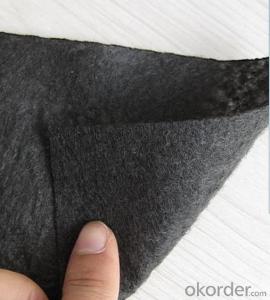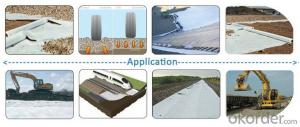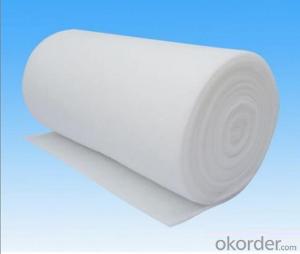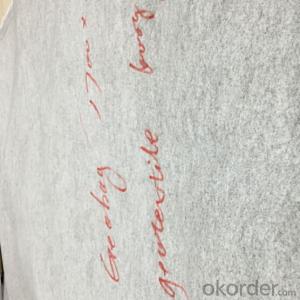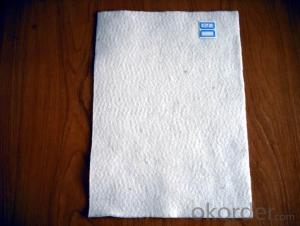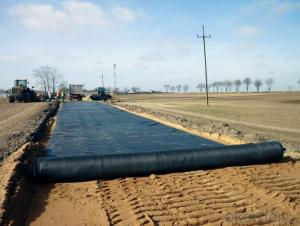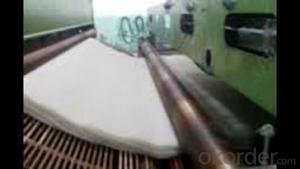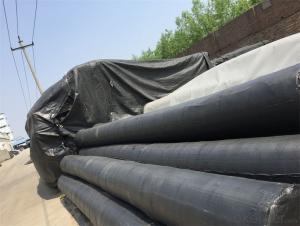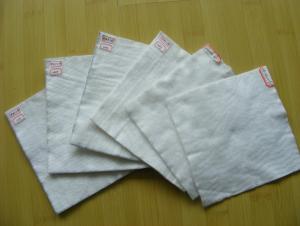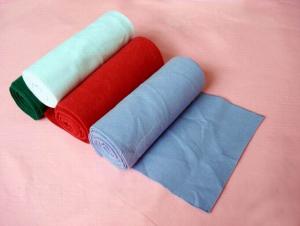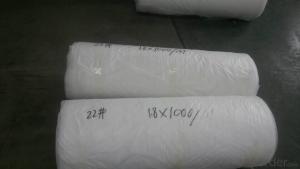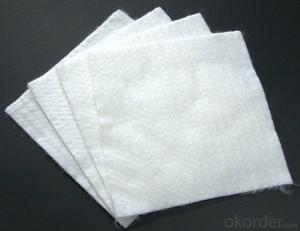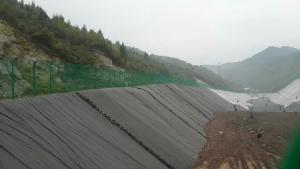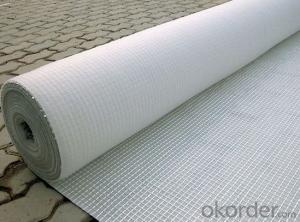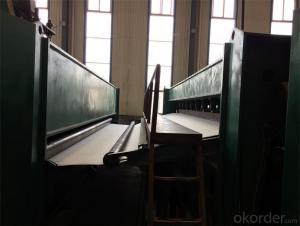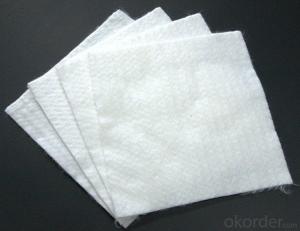Coconut Geotextile PP&PET Non-Woven Fabric Roll
- Loading Port:
- China main port
- Payment Terms:
- TT OR LC
- Min Order Qty:
- 4000 m²
- Supply Capability:
- 1000000 m²/month
OKorder Service Pledge
OKorder Financial Service
You Might Also Like
Specification
Functions
1.Separation
The isolation of the railway dregs and the roadbed, roadbed and the soft base, surface of the airdrome and parking lot and the groundsill, different dam materials. It isolates the soil and the gravel of two kinds different
granule pathway from the groundsill or other buildings.
2.Reinforcement
The highway, railway, soil-stone dam, breakwater, airport, backfill soil of retaining wall, slope protection, etc in which distributes the earth stress, prevents the side-displacement of the earth body and improves the earthbody stability.
3.ProtectionIt prevents the bank from being washed out, protects the bank and the
bottom, prevents the water and soil from being washed away

Packaging & Shipping
Packing: PLASTIC FILM INSIDE, AND WOVEN BAG OUTSIDE
Shipping: About 15 days after receipt the deposit
geotextile fabric
permeability,filtration,easy for construction
ISO and CE certificate
Good quality and competitive price
Our Service
Quality assurance
1.On a regular basis or as per your request,we entrust national testing agencies to conduct quality inspections
2. Strictly in accordance with the ISO9001-2008 international quality system standard,we monitor and manage the whole process throughout production,quality testing,and measurement to ensure product quality
3. For quality-related construction delay or substandard construction(except for damage or losses due to customer’s responsibility or irresistible natural disasters),we have refunding,replacement,and repair services.We will respond to customers’ feedbacks on quality issues within 24 hours.
FAQ:
Q: What kind of payments does jenor support?
A: T/T, L/C, Cash are accepted.
Q: Do you charge for the samples?
A: Accordeing to our company policy, the samples are free, we only charge the freight fee. And we will return the freight fee during the next order.
Q: Can you produce according to customers' design?
A: Sure, we are professional manufacturer, OEM and ODM are both welcome.
Q: Do you have other products?
A: Yes, please check the pictures:
- Q: I am currently displaying my geotextile samples in a brochure type display holder.but its not really working for holding a large amount. i can only fit about 8 in each holder. not very practical. i have been perusing google and stuff but am not coming up with much. i see very large cases, or the same displays i have now. does anyone have any ideas????PS This would be sitting on the top ledge of my desk so i am not really wanting anything that stands on the floor. hopefully someone else out there can help!
- Brittney420? My type of woman! We should hang out, my name is Art and you can message me if you want my number. I'm 6' 160 Pounds, I got a job, a HUGE house and a dog. Sorry I couldn't answer your question though.
- Q: Can geotextiles be used for erosion control in riverbanks?
- Yes, geotextiles can be used for erosion control in riverbanks. They are commonly employed to stabilize soil, prevent erosion, and enhance vegetation growth in riverbank applications. Geotextiles provide reinforcement, filtration, and drainage capabilities, making them effective in reducing soil erosion and maintaining the stability of riverbanks.
- Q: What are the different geotextile installation equipment and tools?
- Some different geotextile installation equipment and tools include: 1. Excavators: Used to prepare the ground by digging trenches or removing existing soil. 2. Trenchers: Specifically designed to create narrow trenches for laying geotextile materials. 3. Rollers: Used to compact the soil and ensure proper adhesion of the geotextile fabric. 4. Spreaders: Designed to evenly distribute the geotextile material over the prepared surface. 5. Staple guns: Used to secure the geotextile fabric to the ground or other surfaces. 6. Tensioners: Used to stretch and tighten the geotextile fabric during installation. 7. Cutting tools: Such as utility knives or scissors, employed to trim the geotextile material to the required size. 8. Anchor pins: Used to secure the geotextile fabric in place and prevent shifting. These tools and equipment aid in efficient and effective installation of geotextile materials, ensuring their proper functionality and longevity.
- Q: What are the cost implications of using geotextiles in construction projects?
- The cost implications of using geotextiles in construction projects can vary depending on factors such as the type and quality of the geotextile, the size and complexity of the project, and the specific requirements of the site. Geotextiles can contribute to cost savings by reducing the need for traditional construction materials, such as aggregate or soil, and by improving the longevity and performance of the project. Additionally, geotextiles can help minimize maintenance and repair costs by providing erosion control, drainage, and stabilization. However, the initial investment in geotextiles and their installation may increase upfront costs compared to traditional construction methods. Overall, a thorough cost-benefit analysis should be conducted to determine if using geotextiles is financially advantageous for a specific construction project.
- Q: Can geotextiles be used in shoreline protection?
- Yes, geotextiles can be used in shoreline protection. They are commonly used to stabilize and reinforce shorelines by providing erosion control, preventing soil movement, and promoting vegetation growth. Geotextiles help reduce wave energy, filter sediment, and improve overall stability, making them an effective solution for shoreline protection.
- Q: How do geotextiles help with soil separation in subgrade improvement projects?
- Geotextiles are used in subgrade improvement projects to separate different soil layers, preventing them from mixing. They act as a barrier, allowing water to pass through while preventing the migration of fine particles. This helps to maintain the stability and strength of the subgrade, reducing the risk of settlement and soil erosion.
- Q: Geotextile standard is broken how low?
- Geotextile of the top of the strong implementation of the national standard GB / T-2008, the standard of the geotextile bursting strength requirements in the international arena is not very low. Geotextile because it is produced by fiber acupuncture, and its breaking strength and elongation at break for the main performance indicators, even in practical applications when we are mainly using these two characteristics of geotextile. Breaking strength is called CBR bursting strength, the main test is the product of anti-puncture, the general waterproof, impermeable material requirements are higher, and geotextile is the filter, the protection of materials, so the standard requirements are lower.
- Q: How do geotextiles contribute to soil moisture retention?
- Geotextiles contribute to soil moisture retention by acting as a barrier that prevents water evaporation from the soil surface. They also help in distributing water evenly throughout the soil profile by reducing the rate of infiltration and promoting slow water percolation. Additionally, geotextiles can prevent soil erosion, which can lead to the loss of moisture from the soil. Overall, geotextiles play a crucial role in retaining soil moisture and promoting healthy plant growth.
- Q: What are the different geotextile permeability testing methods?
- Some different geotextile permeability testing methods include the constant head method, falling head method, and the flexible wall permeameter method. The constant head method involves applying a constant water head to the geotextile specimen and measuring the flow rate. The falling head method involves measuring the time it takes for the water level to fall a known distance in a permeameter connected to the geotextile specimen. The flexible wall permeameter method measures the flow rate through a specimen confined between two flexible walls. These testing methods help determine the permeability and hydraulic properties of geotextile materials.
- Q: What are the advantages of using geotextiles in stormwater management systems?
- Geotextiles offer several advantages in stormwater management systems. Firstly, they provide effective sediment filtration, preventing soil erosion and the accumulation of pollutants in water bodies. Secondly, they enhance soil stability by reinforcing the ground and minimizing the risk of slope failures. Additionally, geotextiles promote water infiltration and drainage, reducing the chances of flooding and ponding. They are also cost-effective as they require less maintenance and have a longer lifespan compared to traditional erosion control methods. Overall, geotextiles play a crucial role in improving the overall performance and sustainability of stormwater management systems.
Send your message to us
Coconut Geotextile PP&PET Non-Woven Fabric Roll
- Loading Port:
- China main port
- Payment Terms:
- TT OR LC
- Min Order Qty:
- 4000 m²
- Supply Capability:
- 1000000 m²/month
OKorder Service Pledge
OKorder Financial Service
Similar products
Hot products
Hot Searches
Related keywords
